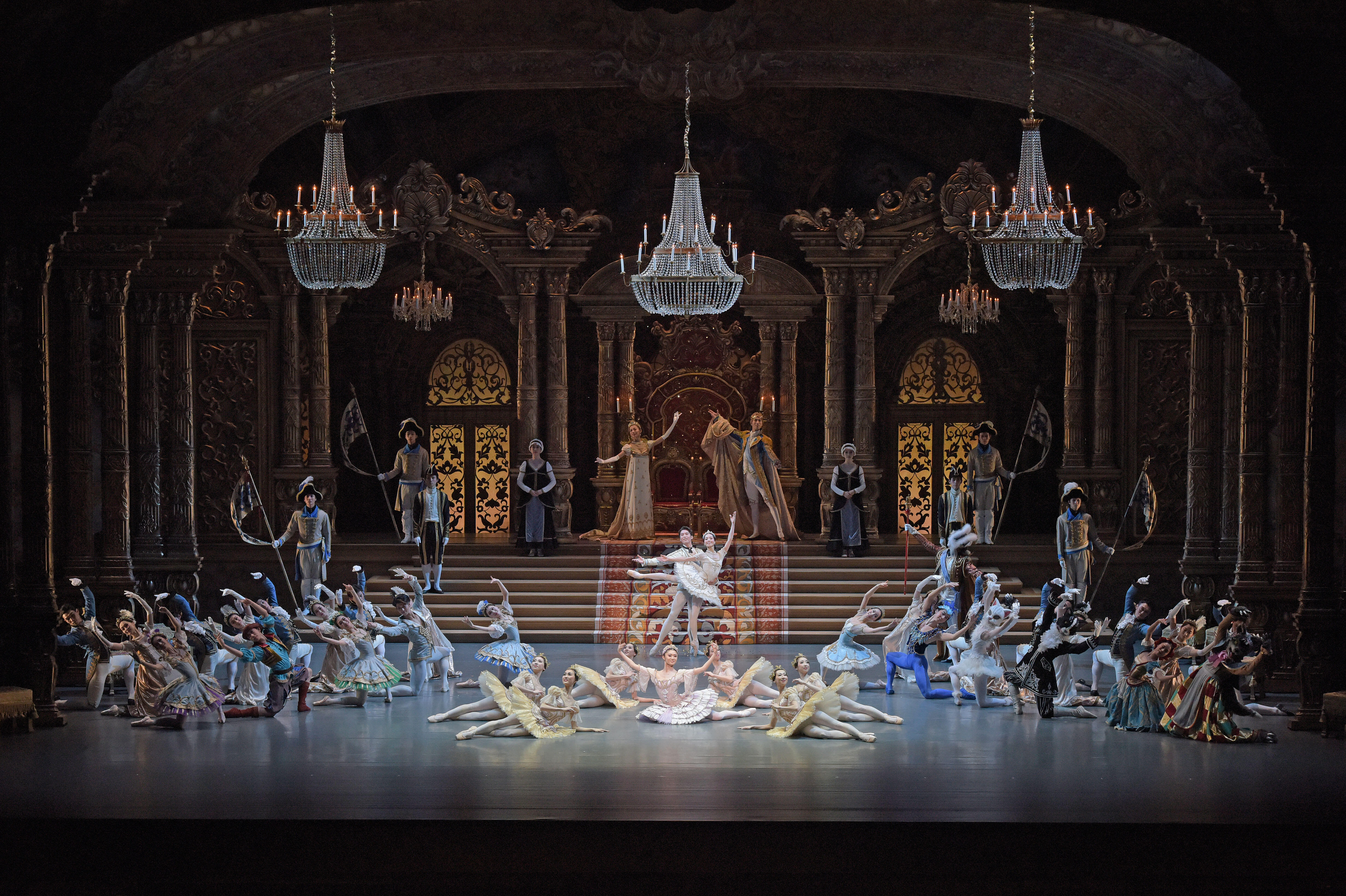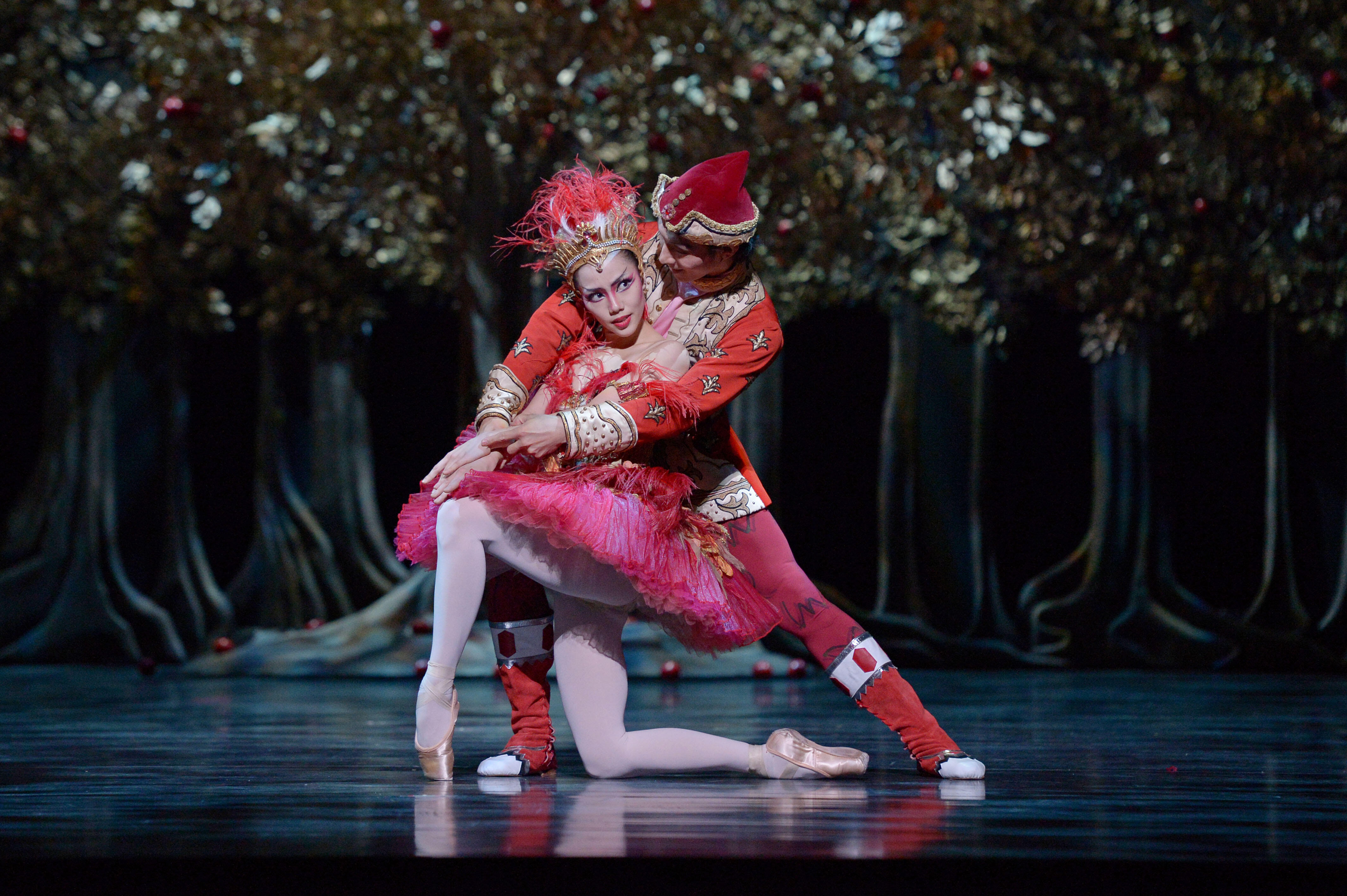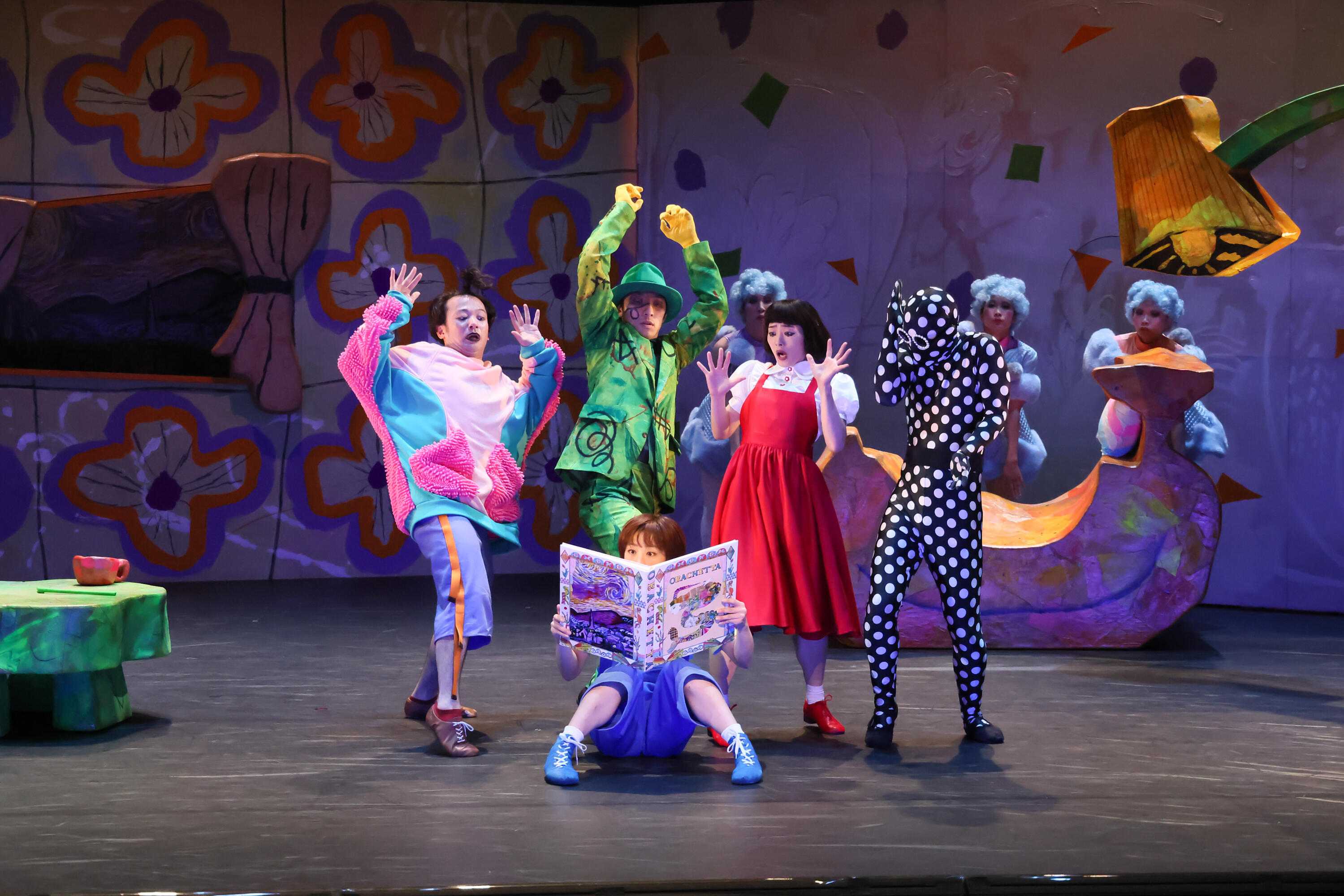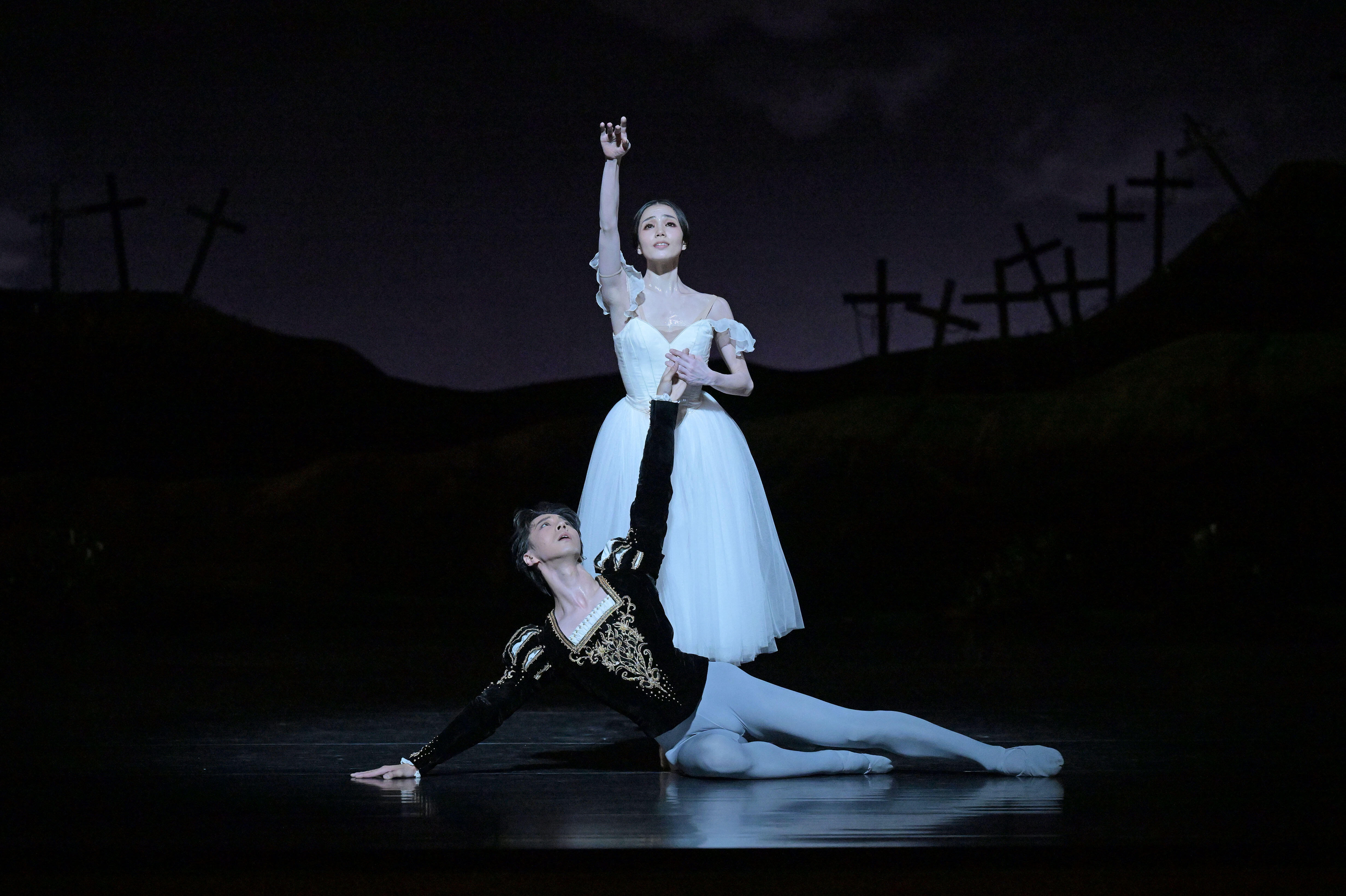Interview: Artistic Director Miyako Yoshida talks about the 2024/2025 season
The Sleeping Beauty Opens the New Season
"With a Sense of Adventure"
―The new season opens with The Sleeping Beauty, the crown jewel of classical ballet.
"With a Sense of Adventure" is the theme for the new season. We have chosen this phrase because we feel the need to push forward more assertively now that we have come out of the long tunnel of the pandemic. We are opening the season with The Sleeping Beauty to mark our challenging new chapter. This ballet involves many roles and offers opportunities for many dancers, so we expect that many young dancers will be making their role debuts.
Fresh and daring casting, in the sense of giving opportunities to young dancers, brings a lot of energy and excitement to the company. For example, in the recent production of La Bayadère, many dancers made their role debuts, and it was refreshing to see how they supported and helped each other. The veteran dancers teach the newcomers, and the dancers who perform the same role share their teachers' advice with each other, even though they are busy with their own rehearsals. This is something I never saw when I was dancing with the Royal Ballet, and I think it is one of the positive aspects of the National Ballet of Japan. The spirit of challenge is wonderful, with a heartwarming atmosphere of mutual support and nervous energy leading up to the performance (laughs).

YOSHIDA Miyako
―By kicking off this ambitious season with a true classic among classics, I can sense your pride and confidence as an artistic director.
The Sleeping Beauty is a must for any classical ballet company and should be performed regularly because it contains all the essentials of classical dance―precise fundamentals, stage manners, and mime―that can easily be neglected if one is not careful.

The Sleeping Beauty (2021)
―DANCE to the Future 2024 is a series of programmes showcasing selected works from the NBJ Choreographic Group, a project aimed at nurturing choreographers from within the company.
It tends to be the same people submitting works now, but I feel that they are improving each time. We have started to see the results of this initiative with productions like Story of a Little Mermaid by Tetsuo Kaikawa, which we performed this summer, and a new work by Keigo Fukuda that will be performed in July 2025 as part of the Young NBJ GALA 2025. These two dancers regularly create works, and their pieces have been selected to be performed at DANCE to the Future. Just like dancers, choreographers also grow through the number of performances they present on stage. We hope to continue this project, as it provides artists with valuable creative experience while working in the theatre.
―The Nutcracker and the Mouse King, which has now become a festive season tradition, continues to increase its number of performances year after year, reaching a total of 18 performances this year.
I am delighted that the tradition of presenting The Nutcracker and the Mouse King during the Christmas and New Year holidays has taken root. We are seeing an increase in family attendance and a growing international audience. This larger audience allows us to increase the number of performances. I recognise that this success is partly due to the effective PR and marketing efforts of the theatre staff, including the production of posters, flyers, magazines, and social media posts. Of course, our primary goal is still to deliver high-quality performances and ensure audience satisfaction.
The Nutcracker and the Mouse King (2023)
―Ballet Coffret in March 2025 is another performance to watch out for. It is a triple bill featuring the newly produced Etudes, choreographed by Harald Lander; The Vertiginous Thrill of Exactitude, choreographed by William Forsythe; and The Firebird, a masterpiece of the Ballets Russes, which will be performed for the first time in 12 years.

The Firebird (2013)
This is one of the biggest challenges of next season because I believe that this triple bill can only be performed by a company with a pool of highly-skilled dancers. All three works are gems in the history of ballet, but each requires a great deal of skill from the dancers. What we need to do is deliver a performance worthy of the masterpieces themselves. I am currently thinking about how we can achieve this, but I am confident that it will be an invaluable challenge for the dancers.
Etudes is based on a ballet class and is a challenging piece that will showcase all of our classical ballet abilities. However, if we can execute it successfully, it will mark another step forward for the company. The Vertiginous Thrill of Exactitude, which has been cancelled and postponed repeatedly due to the pandemic, will finally be performed. While the choreography is rooted in classical techniques, there are moments when dancers must break free from conventional forms and go beyond 'proper dancing'. I hope the dancers will seize this opportunity to push their boundaries.
―In March, Co. Un YAMADA's Obachetta, a popular work enjoyed by both children and adults, will be performed again. In April, your own production of Giselle, which premiered in 2022, will be staged once again. This will be followed by Alice's Adventures in Wonderland in June, choreographed by Christopher Wheeldon. The season will conclude with the Young NBJ GALA 2025 in July.
Obachetta is a dance piece designed for both adults and children to enjoy together. I am delighted to perform it again, as the spectres moving between the afterlife and this world provide a humorous touch, while the theme of life and death is portrayed with warmth.
Giselle, which I will discuss in more detail later, will also be performed at the Royal Opera House in July next year. I'm really looking forward to perfecting it in April and then taking it to London.
Alice's Adventures in Wonderland© by Christopher Wheeldon is another popular production that has delighted audiences at every performance. The final casting will be decided by Christopher, but I am confident that there will be dancers making their debuts in the role this time around as well.
The Young NBJ GALA is a project launched this season to give young dancers the opportunity to perform classical pas de deux. Dancers who have participated in the GALA have demonstrated significant growth and development in subsequent performances, often being given leading and soloist roles. After all, dancers face challenges and undergo changes with each performance, which is why we are committed to continuing this project.

Co. Un Yamada "Obachetta" (2021)

Alice's Adventures in Wonderland© by Christopher Wheeldon
DANCE to the Future: Young NBJ GALA (2023)
The Time Has Come for the National Ballet of Japan
to Step Into the World
―From what you have said so far, it's clear how much importance you place on the development of young dancers. What factors do you consider important when deciding to give significant roles to young dancers?
The current company boasts a diverse range of dancers, including many seasoned veterans. However, I am acutely aware that a ballet company must continually nurture its young talent, and this process indeed takes time. As artistic director, I prioritise being present at rehearsals and watching all the performances from the auditorium. Observing the dancers daily and providing them with opportunities at the right moments are crucial. I am also unafraid to challenge them and offer them chances to try out new things. Of course, giving principal roles to newcomers can be daunting and puts a strain on the coaches. It is certainly safer to rely on experienced, competent dancers for principal roles. However, I was a young dancer at Sadler's Wells Theatre (now Birmingham Royal Ballet) when Peter Wright, the artistic director at the time, gave me a chance, which opened so many doors for me. That experience has taught me the value of believing in the potential of young dancers and casting them.
Every star dancer starts out young and inexperienced. So even if they fail repeatedly, they should be given the opportunity to keep trying. I am not afraid to trust them and let them take their chances.
―While it is undoubtedly important to nurture young dancers, some might argue that if you're going to give principal roles to dancers, you should start with first soloists or soloists from the ranks.
It is true that soloists should dance solos, and ideally, a dancer's role should align with their rank. However, it is also true that the world of ballet cannot always be 'fair.' Some roles naturally suit certain dancers better than others, depending on the movements and character required by the ballet itself. As a result, casting often prioritises aptitude over rank. We discuss this with the dancers during one-on-one meetings and other opportunities to ensure they understand this approach.
―Could you tell us about your overseas tour in July, the highlight of the next season? The National Ballet of Japan will be making its debut at the Royal Opera House in London, UK, where you once danced, with a performance of Giselle.
More than a quarter of a century after its founding in 1997, I feel that the time has finally come for the National Ballet of Japan to perform abroad. We aspire to be widely recognised as Japan's leading ballet company. Naturally, we are aware of the discerning nature of the Royal Opera House audience, so we are definitely feeling the pressure and know that many challenges lie ahead. However, we must remain adventurous and perform with all our hearts. I believe this tour will be a true test of our abilities and determination.

Giselle (2022)

Giselle (2022)
―The National Ballet of Japan has toured abroad twice before, but those were invited performances as a guest company. This time, however, it will be an independent tour, with the company covering the expenses itself.
Japan is still seen as a 'faraway country,' and I don't think we should wait passively for a theatre somewhere in the world to discover our presence. I want the dancers to perform on the stage of the Royal Opera House because there is a unique atmosphere there that can only be experienced by dancing in front of that audience. For the New National Theatre, which has been striving to increase its global presence, this London performance marks a significant step forward for us.
Our London tour has been made possible by the support of the Kinoshita Group Inc., and we would like to express our sincere gratitude to them once again for their generous support.
―You mentioned that, for the performance at the Royal Opera House, 'It is not enough just to be able to dance precisely,' and that remark has stayed with me.
That is exactly what I experienced onstage at the Royal Opera House. No matter how precise your technique is, it is never enough. To convey the story and the role to every corner of that vast theatre and to touch the audience's hearts, each dancer must work even harder and reveal more of their inner self.
―When I reflect on your time as a dancer with the Royal Ballet, you had a remarkable ability to deeply move us, through both your dance and expression. I observe a similar strength in the current principals at the Royal Ballet. What, in your opinion, is the true nature of this power and strength? What makes the dancers from the Royal Ballet so compelling?
I can sense a strong will in the performances of Royal Ballet dancers. It may stem from their need to assert their presence daily in an environment where they must continuously fight to stand out through their dancing.
I previously mentioned how dancers here support each other, a practice that was not common during my time at the Royal Ballet. There, the mindset often was that 'what you have gained is yours alone,' with principals, in particular, keeping their knowledge and skills to themselves. It is rare for other dancers to observe a principal's rehearsal, partly because the presence of others can disrupt focus and partly because it might undermine a dancer's confidence to perform as they wish. While observing others can be a valuable learning experience, dancing often remains a solitary pursuit. Although it may feel lonely, fighting with yourself can ultimately forge greater strength both mentally and physically.
―Please give a message to fans for the new season.
The dancers of the National Ballet of Japan, from our youngest talents to our most seasoned artists, are continually growing and evolving. For instance, earlier this year, when a major earthquake struck the Noto Peninsula, our dancers chose to stay after performances to raise funds for the affected communities. Despite being at the peak of their fatigue from the relentless Nutcracker performances since the end of the year, I found their willingness to contribute and their broader perspective on society and their role as artists deeply touching and impressive.
As we face new challenges, we remain committed to improving the working environment and conditions for our dancers, and to making meaningful contributions to society as an arts organisation. We hope you will continue to support and embrace the challenges of the National Ballet of Japan in the 2024/2025 season.
❝The Sleeping Beauty❞
On Stage 25 October - 4 November.
See here for more information.
You can find out more about 2024/2025 Season Ballet & Dance by clicking here.

